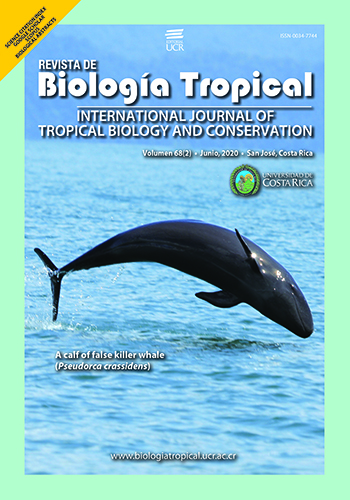Abstract
Introduction: The use of museum specimens as a source of genetic information to develop studies that resolve taxonomic, ecological, demographic and evolutionary questions at various temporal and geographic scales, has recently become relevant. However, genetic material obtained from specimens deposited in biological collections is not used frequently due to the natural deterioration of the DNA preserved in these specimens. Getting quality genetic material is demanding in terms of time and money. Objective: By using museum material, to identify a mini-barcode sequence that can be used in taxonomic determination and provides information that allows the estimation of phylogenetic relationships of species of the genus Bombus. Methods: the DNA extraction protocol for museum samples was standardized using the right mesothoracic leg and / or a sample of thoracic muscle of 96 specimens deposited in the LABUN collection between 7 and 38 years ago. Different combinations of oligonucleotides allowed to amplify fragments from 152 to 407 base pairs (bp) of the mitochondrial gene Cytochrome Oxidase I (COI). Using as a template a group of 31 sequences amplified from recently collected specimens, the fragments obtained from the museum specimens were assembled and analyzed in a phylogenetic framework. Additionally, a haplotype network analysis was performed in order to evaluate in detail the relationships between the resulting mitochondrial haplotypes. Results: The greatest success of DNA extraction was achieved from limb samples deposited since the year 1982 on. Meanwhile, successful amplification of fragments longer than 300 base pairs (bp) was achieved mostly in samples deposited on dates after 1999, which indicates greater integrity of the genetic material recovered from individuals of 19 years of collection and onwards. Although all the fragments evaluated can be used as mini-barcode, only with one primer pair, it was possible to obtain a topology similar to that observed with the complete fragment. A large genetic variation was detected, particularly within the Bombus atratus and B. funebris species, in which a clear phylogeographic structure was revealed. Conclusions: New barcode sequences were obtained through DNA extraction and amplification protocol from museum samples. Furthermore, new information on intraspecific genetic variability was generated, detecting the presence of unique mitochondrial haplotypes that could constitute management units subject of conservation. Such information is of vital importance to formulate generation of conservation strategies for these pollinators in Colombia.
Comments

This work is licensed under a Creative Commons Attribution 4.0 International License.
Copyright (c) 2020 Ingrid Astrid Lotta-Arevalo






